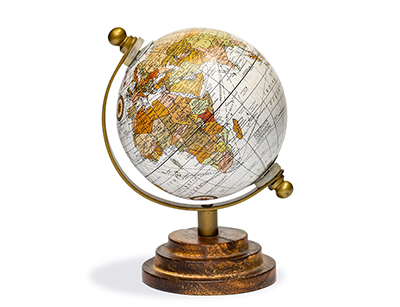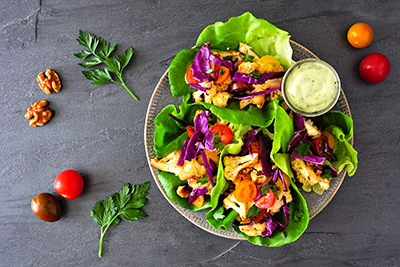Blue Zones and the Evidence-Based Practices Associated with Longevity
With the global population aging at an unprecedented rate, there is a growing urgency to uncover ways to improve the health of our extended lifespans. In this quest for longevity, the spotlight turns to the enigmatic “blue zones”—regions of the world where individuals commonly live past 100 years with remarkable vitality.
Research has found that genetics only influences longevity by approximately 25%. This means that the other 75% is influenced by lifestyle factors including diet and environmental factors.[i]
Blue zones are specific regions around the world where people tend to live longer, healthier lives.
 Where Are the Blue Zones?
Where Are the Blue Zones?
- Sardinia, Italy
- Okinawa, Japan
- Loma Linda, United States
- Nicoya, Costa Rica
- Ikaria, Greece
These regions are identified as blue zones due to their people achieving the age of 100 at rates ten times higher than in other parts of the world. In fact, many individuals in blue zones demonstrate the ability to reach their 90s without experiencing chronic diseases.[ii]
Given the widespread desire for longevity, scientists have extensively examined these areas to uncover shared lifestyle and dietary practices that contribute to the remarkable longevity observed by their populations. Research has identified nine evidence-based factors, common among the world’s oldest individuals, believed to have a slowing effect on the aging process.
Purpose
Evidence suggests that knowing your sense of purpose can increase your life expectancy by up to 7 years. Okinawans call this “ikigai,” and Nicoyans call it “plan de vida.” Both translate to “why I wake up in the morning.” Purpose is about your existence, why you want to be here.[iii]
 Move Naturally
Move Naturally
The longest-living individuals live in environments that encourage movement in their daily living. They do not specifically go to the gym or attend specialized workout classes; instead, activity is built into their daily living. This could include gardening, cooking, walking, and other daily work activities.[iv]
Downshift
In the context of lifestyle, this means simplification. It is about adopting a simpler lifestyle and a less chaotic way of life. It may involve reducing work hours, embracing a slower pace, and prioritizing personal wellbeing. Essentially, it is about reducing stress, as stress can lead to chronic inflammation, which is associated with every major chronic disease.[v]
For example, Okinawans spend a few moments per day remembering their ancestors, Sardinians do happy hour, and Ikarians take naps.
The 80% Rule
This rule has to do with caloric intake. Essentially, individuals eat until they are 80% full instead of 100% full. This 20% gap is the difference between not being hungry and not overconsuming.[vi] By practicing the 80% rule, individuals may avoid the negative health impacts associated with excessive caloric intake. This can lead to better weight management and, potentially, a reduction in chronic disease.[vii] In addition, research has found that people in the blue zones eat their smallest meal in the late afternoon or early evening.
Reduced calorie intake along with some fasting are common practices in people of blue zones.[viii]
 Plant Slant
Plant Slant
The concept emphasizes a diet that is predominantly plant-based. In blue zones, individuals tend to consume a variety of plant-derived foods such as fruits, vegetables, legumes, and whole grains. Meat is consumed in blue zone regions: mostly pork, eaten a few times per month.[ix]
Wine Consumption
People in most blue zones drink both moderately and regularly. Common practices include drinking 1–2 glasses of wine daily in company and with food.[x] There is mixed evidence on alcohol consumption as it relates to mortality, with more recent research suggesting there is no protective effect of regular alcohol consumption in comparison to abstention or occasional drinking.[xi]
Belonging
This refers to belonging to some faith or religious community. Research shows that having a faith-based practice can lower your risk of death and extend your life expectancy by 5–15 years.[xii], [xiii]
Loved Ones First
This refers to a family-first mentality. This means keeping aging parents or grandparents nearby (or in home), committing to a life partner, and investing in children in terms of love and time together.[xiv] Studies have shown that grandparents who care for their grandchildren have a lower risk of disease and mortality—but interestingly, these effects can also support the health of children in the home too.[xv]
Right Tribe
This includes your social circle (those you choose as your family). Ideally, the people in your circle support and motivate you to engage in healthy behaviours.[xvi]
As you reflect on your current lifestyle and that of blue zone regions, what can you do differently? Is there something you can take from this information and use to better your life? Can you work on your stress management? Can you incorporate more plant-based meals? Can you spend more quality time with the people you love? You may not live in a blue zone, but you can do your best to incorporate some of their practices into your daily living to support your health and longevity. Even the smallest changes can make a difference.
 Angela Wallace, MSc, RD
Angela Wallace, MSc, RD
A registered dietitian with the College of Dietitians of Ontario, personal trainer, and family food expert who specializes in women and child nutrition and fitness, she loves helping families get healthy together.
eatrightfeelright.ca
[i] Buettner, D., and S. Skemp. “Blue zones: Lessons from the world’s longest lived.” American Journal of Lifestyle Medicine, Vol. 10, No. 5 (2016): 318–321.
[ii] Buettner and Skemp. op. cit.
[iii] Buettner and Skemp. op. cit.
[iv] Buettner and Skemp. op. cit.
[v] Buettner and Skemp. op. cit.
[vi] Buettner and Skemp. op. cit.
[vii] Willcox, B.J., D.C. Willcox, H. Todoriki, A. Fujiyoshi, K. Yano, Q. He, J.D. Curb, and M. Suzuki. “Caloric restriction, the traditional Okinawan diet, and healthy aging: The diet of the world's longest-lived people and its potential impact on morbidity and life span.” Annals of the New York Academy of Sciences, Vol. 1114 (2007): 434–455.
[viii] Buettner and Skemp. op. cit.
[ix] Buettner and Skemp. op. cit.
[x] Buettner and Skemp. op. cit.
[xi] Stockwell, T., J. Zhao, S. Panwar, A. Roemer, T. Naimi, and T. Chikritzhs. “Do ‘moderate’ drinkers have reduced mortality risk? A systematic review and meta-analysis of alcohol consumption and all-cause mortality.” Journal of Studies on Alcohol and Drugs, Vol. 77, No. 2 (2016): 185–198.
[xii] Buettner and Skemp. op. cit.
[xiii] Li, S., M.J. Stampfer, D.R. Williams, and T.J. VanderWeele. “Association of religious service attendance with mortality among women.” JAMA Internal Medicine, Vol. 176, No. 6 (2016): 777–785.
[xiv] Buettner and Skemp. op. cit.
[xv] Buettner and Skemp. op. cit.
[xvi] Buettner and Skemp. op. cit.

 Stores
Stores